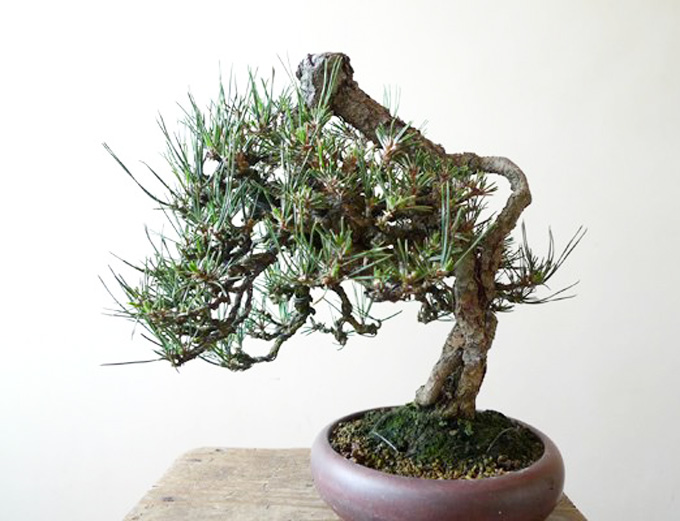 We’ll call this little pine tree number 1 (pretty creative eh?). I’m not sure if this is the best view, but it does provide a clear shot of the trunk which appears to be two trunks that start together, separate and then come back together, though if you go down to the last photo, you might be surprised at all that you can’t see here. Beyond the interest created by the trunk, there’s the branching which is pretty well developed for such a small tree.
We’ll call this little pine tree number 1 (pretty creative eh?). I’m not sure if this is the best view, but it does provide a clear shot of the trunk which appears to be two trunks that start together, separate and then come back together, though if you go down to the last photo, you might be surprised at all that you can’t see here. Beyond the interest created by the trunk, there’s the branching which is pretty well developed for such a small tree.
You gotta love Shohin. All the photos here are borrowed from a Michael Bonsai series titled ‘You gotta love Shohin.’ Agreed.
Apologies BTW. For jumping around from tree to tree in a way that’s bound to confuse you. Though if you pay attention to my highly sophisticated numbering system, you might survive.
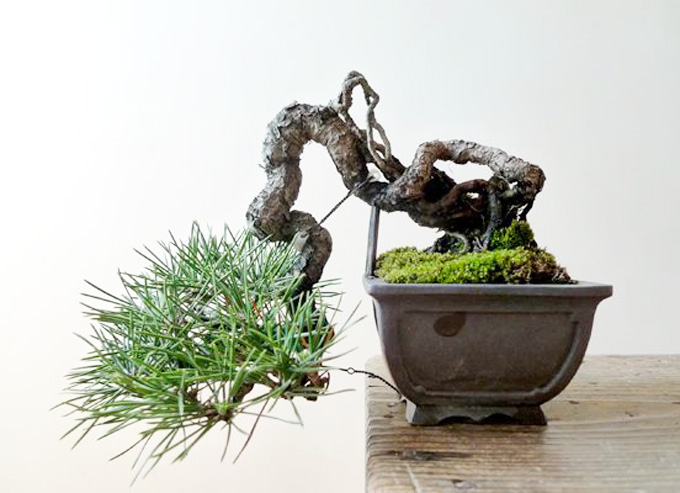 Tree number 2 seems like a good name for the second tree. There’s a lot of action at the base. Do you think that this provides interest, or …? I wonder how much of the trunk was (or trunks were) originally underground. There are simple ways to turn roots into trunks and even branches.
Tree number 2 seems like a good name for the second tree. There’s a lot of action at the base. Do you think that this provides interest, or …? I wonder how much of the trunk was (or trunks were) originally underground. There are simple ways to turn roots into trunks and even branches.
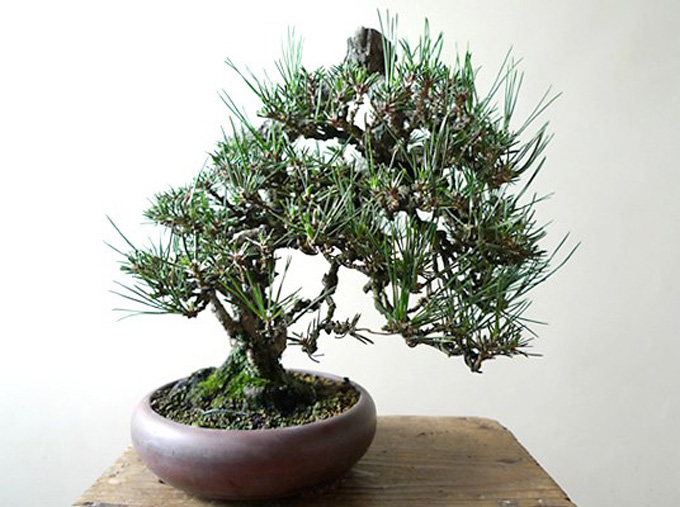 Another view of tree number 1. I had to look twice to convince myself that this is the same tree. It’s the blunt knob at the top that cinched it. That and the pot.
Another view of tree number 1. I had to look twice to convince myself that this is the same tree. It’s the blunt knob at the top that cinched it. That and the pot.
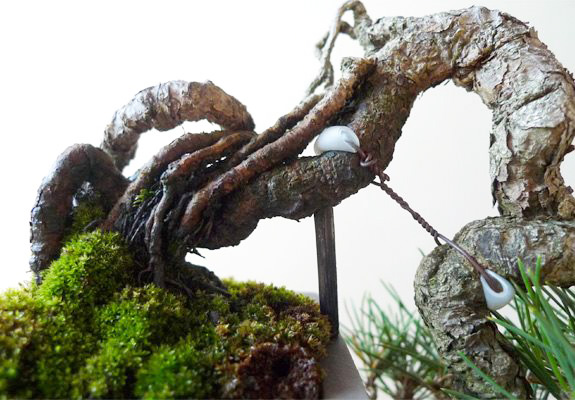 Close of tree number 2. Another view of all the action at the base. Our notion that much of this tree was once underground seems to be confirmed by this shot.
Close of tree number 2. Another view of all the action at the base. Our notion that much of this tree was once underground seems to be confirmed by this shot.
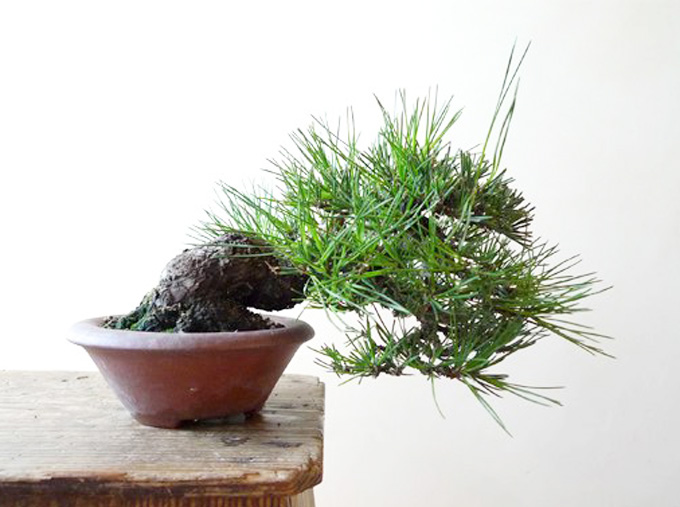 Tree number 3. A stubby pine with an unfinished haircut.
Tree number 3. A stubby pine with an unfinished haircut.
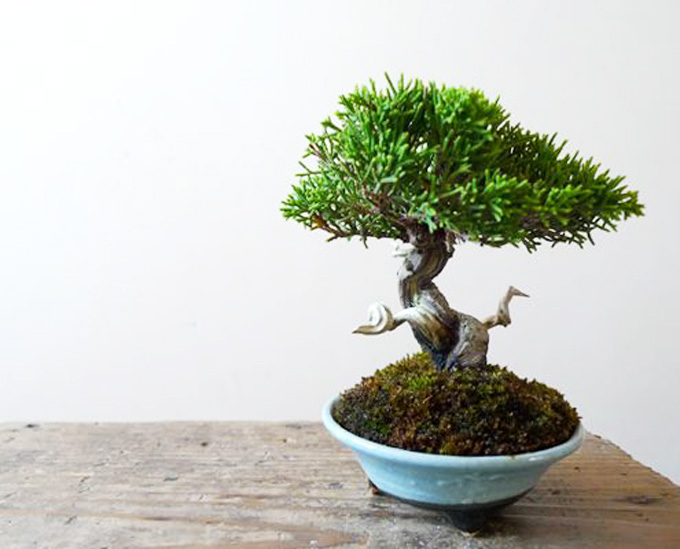 Sweet shimpaku. As you can see, tree number 4 is not a pine.
Sweet shimpaku. As you can see, tree number 4 is not a pine.
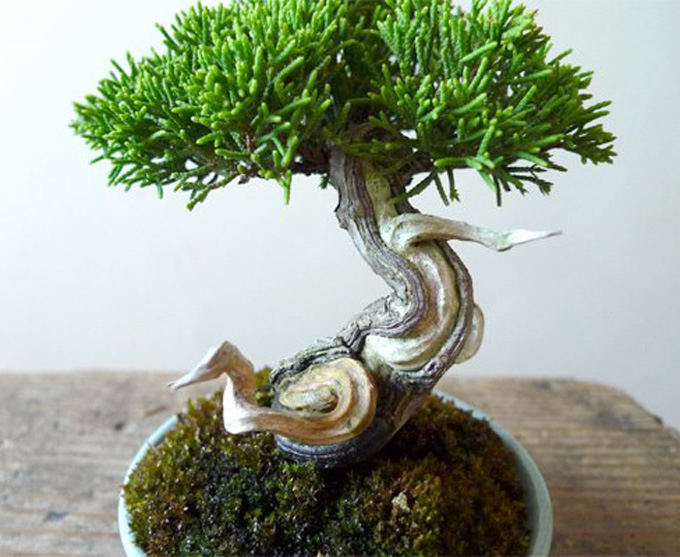 Opposing swirls. Close up of tree number 4.
Opposing swirls. Close up of tree number 4.
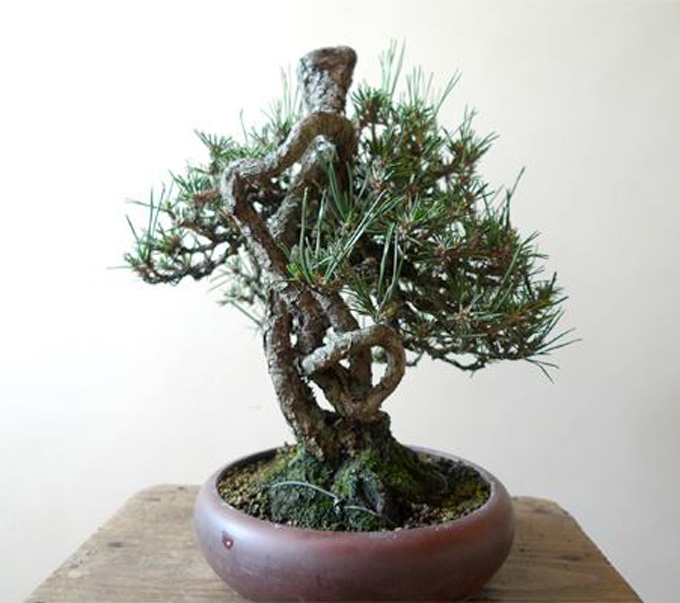 Tree number 1 again. Whoa! There’s so much more than what meets the eye in the other two photos. Almost looks like a different tree, but there’s that telltale blunt knob at top (not to mention the pot).
Tree number 1 again. Whoa! There’s so much more than what meets the eye in the other two photos. Almost looks like a different tree, but there’s that telltale blunt knob at top (not to mention the pot).
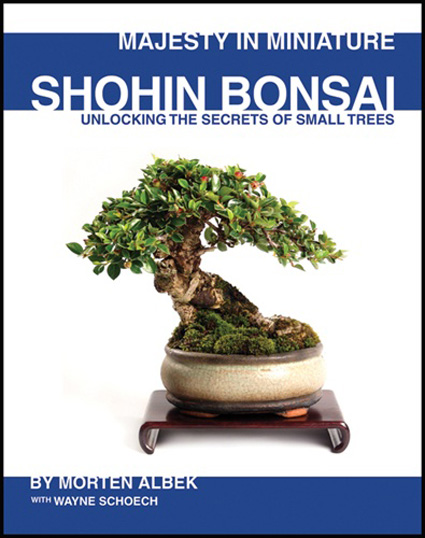 Want to investigate Shohin bonsai in more depth? This excellent book will take you a long ways in that endeavor.
Want to investigate Shohin bonsai in more depth? This excellent book will take you a long ways in that endeavor.
Hi there Wayne.
I know you’re a fanatic for attribution, so I thought I might clarify a bit. All of these Shohin Bonsai on Michaels site come from Mikunien’s Sale page of coniferous bonsai, as did one I posted a link to on Peter Warren’s blog a couple of weeks ago. Please have a look, there are some very nice trees there!
http://bonsai-mikunien.com/?mode=cate&cbid=818747&csid=1&page=2
Thanks Ryan,
Who knew. All from a great commercial site. Just took a look to see what else is out there. Here’s Mikunien on facebook: http://apps.facebook.com/bonsai-mikunien/
I did, obviously. Feel not ashamed. I traced back a tree Trev had his eye on for three years online. Not much I haven’t seen that the Japnese post online about Bonsai, and my field of expertise, containers…I’m a little miffed you haven’t featured my chip and seal page , TTtT. Lol.
Ryan, I don’t blame you for being miffed. Your ‘chip and seal’ blog is great. And don’t worry, it’s in line for its 15 minutes of bonsai bark fame (for what that’s worth).
And TTtT to you too (though the urban dictionary says TTTT and now I know something I didn’t know 5 minutes ago).
Haha. You’ve featured my website many times in some way or another Wayne. Just having a poke. You’d be surprised how many photos on Facebook come from Japanese commercial websites. There’s a whole lot of S cube on Michaels blog as well.
Gotta hate that automatic spell check…chip indeed.
Hmm. By the looks of number one, I think the the branch and ramification came from another tree and then was approached grafted to the rootstock or its own rootstock (helps explain the big hump at the top). Your right about number two, usually the bark development occurs from the base upward (too many black pines to count in my backyard). Number three looks like last years needles was cut with a pair of scissors and the current year has not been de-candled. Nice shimpaku! Or I could be completely wrong but great pictures and finds as always.
Ryan,
You mean ‘chips and seals’ isn’t a little inside joke? I’m disappointed. Oh well.
Thanks Sely (aka bonsaiguitarfood),
Good observations on all three counts.